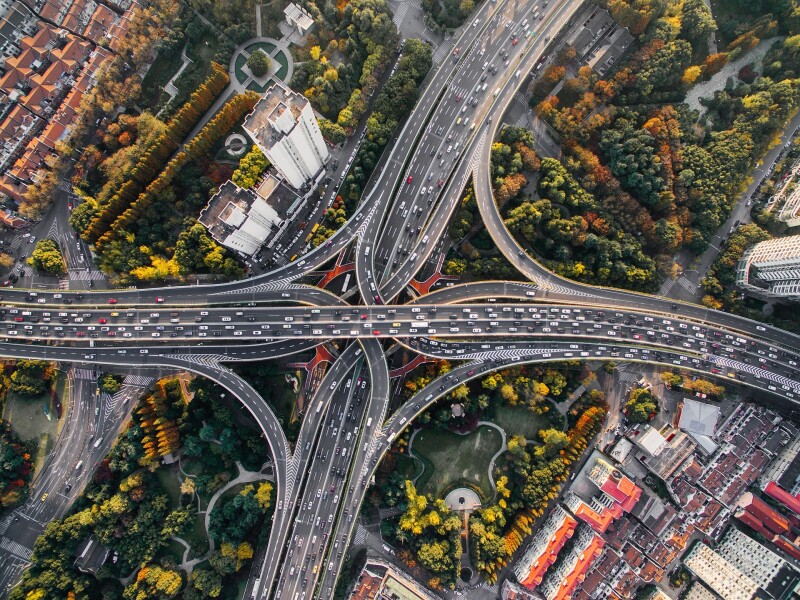In September, the US House of Representatives passed the Drone Infrastructure Inspection Grant Act. The law would fund a $200 million drone infrastructure inspection plan along with a program for drone education and training. To be run by the US Department of Transportation, these efforts would advance assessments and maintenance of the country’s infrastructure and transportation systems.
The passage of the bill in the House demonstrates that government officials are serious about addressing problems with the nation’s roads, bridges, tunnels, ports, sewers, and other critical systems. The bill also reflects a growing understanding on the part of public leaders that uncrewed technology must be part of that effort.
Because drones and related systems allow for faster, safer, and cheaper oversight and maintenance of transportation and infrastructure projects, the need for wider adoption of the technology could not be clearer. Still, many government agencies and private businesses involved in transportation and infrastructure have been slow to adopt drone technology.
Issues around start-up costs, staffing and training, and government regulations that limit the scope of operations are often cited as barriers to full adoption. The complications involved in creating appropriate workflows and processes and the complexities related to capturing accurate information about infrastructure assets are also named as impediments to embracing uncrewed systems.
To explore these issues, Commercial UAV News spoke with Greg Lang, GISP, Lead IT/GIS Engineer for Pierce County Spatial Services in Washington state.

Lang has more than 20 years of experience leading successful technology transition projects for small teams and entire organizations, including the integration of drone technology in public projects.
In an interview, Lang addresses six top barriers to the adoption of drone technology in the transportation and infrastructure sector and offers solutions that could pave the way for greater implementation.
1. Creating flight plans, workflows and processes
Commercial UAV News: How do we create flight planning, data collection, and analysis operations tailored to specific infrastructure and transportation projects? Are the complexities of this work too much for organizations to overcome?
Lang: New capture workflows are spearheaded by lead department pilots, the program lead pilot, or a combination of the two, and the flight plans and data needs are simply part of that R&D process. That process includes discussion, test captures, processing, review, and as many iterations necessary for a viable and repeatable product. Any organization with technical leadership should have no problem navigating through a mild-to-moderately complex workflow, given they have staff with some prior experience. The more experience on the team, the easier it will be.
2. Capturing accurate information
Commercial UAV News: The point of using drones and imaging systems for these operations to collect accurate and useful data, but not everyone knows how to do this in an efficient, cost-effective way. How can we create drone-based projects that get us the data we need and at the appropriate level of accuracy?
Lang: Developing accuracy standards that relate to client needs is very important. Take a survey or gather feedback related to the needs of your client base and offer “grades” or “levels” of accuracy that you know you can provide based on actual field testing. If you are not sure of what you are capable of capturing, pick a test site with recent survey markers or digital reference points, and fly some testing over it using the tools at your disposal. Don’t ever promise something specific based on a spec sheet. There is no need increasing capture time to achieve accuracies higher than requested.
3. Managing coordination between public agencies and private companies
Commercial UAV News: Many transportation and infrastructure projects require close coordination between government entities and private industry. Do differences in funding sources, oversight protocols, employee experience and training, and organizational culture ever stand in the way of effective work with drones?
Lang: They sure do, and we have used our experience in spatial data implementations to help keep the experience positive and constructive. It is important to know your contacts and their roles, document at least the basics of what is expected, and choose a simple method and schedule of sharing progress and large datasets with both sides. If either side has questions, make room for a discussion to address that before it leads to mistrust or confusion.
4. Regulations
Commercial UAV News: While the regulatory environment around drones is constantly evolving—particularly around flying beyond visual line of sight (BVLOS)—many still feel that they do not have the freedom to perform the missions they would like to perform and stay within the law. What has to change in the regulatory realm for drones to reach their full potential in the fields of transportation and infrastructure?
Lang: A method of choosing platforms for purpose needs to evolve, and the ability to fly more advanced and automated missions is already here, but without clarity of how and where to proceed. More permissive BVLOS regulation needs to be created, and platforms with safety built in need to be developed and deployed. The beginnings of these moves are already set and creeping along, and the continued benefits and safety record of drones should keep it moving forward. The cost/benefit equation will steadily improve as that progress in made.
5. Training and Personnel
Commercial UAV News: As the world of drone-based operations expands, the infrastructure and transportation sectors will need more qualified individuals to fly missions, as well as analyze and operationalize data. What types of drone professionals are needed for us to receive the full benefits of this technology—and where will we find them?
Lang: Technical specialists in the realms of spatial data design and collection, infrastructure engineering, and industrial design are primary sources of new, more effective drone workflows. We can’t lose sight of, or forget, the close connection of transportation health, to the immediately actionable results of our capture efforts. As workflows become stable and productive, flight automation and optimized processing should allow for scaling of operations with less technical staff from a variety of backgrounds.
6. Cost
Commercial UAV News: Drones can be used for inspections, mapping, imaging, and public safety operations in ways that are far less expensive than using people. Unfortunately, the costs associate with getting into the drone business are seen as prohibitive by some companies and organizations. How can we convince those who would be benefit from drones that the start-up costs are worth it? What costs need to come down (hardware, software, training, etc.) for the industries to full embrace drones?
Lang: The cost of a basic program is mostly related to the staff you have on hand who have time, interest, and/or related experience to get it started and operate it. The basic hardware and software can be modest and are generally very affordable, but the program setup related to standards, documents, and use cases often consume the most time, and become the biggest hurdle. Connecting with a like organization willing to share startup documents is the best way to save cost on your way to operating drones and is the model we use locally to buildout new operating groups.
Watch for future articles in our "6 Barriers to Drone Adoption" series in the weeks to come, and be sure to read our first installment, "6 Barriers to Drone Adoption in Surveying & Mapping and How to Overcome Them."















Comments